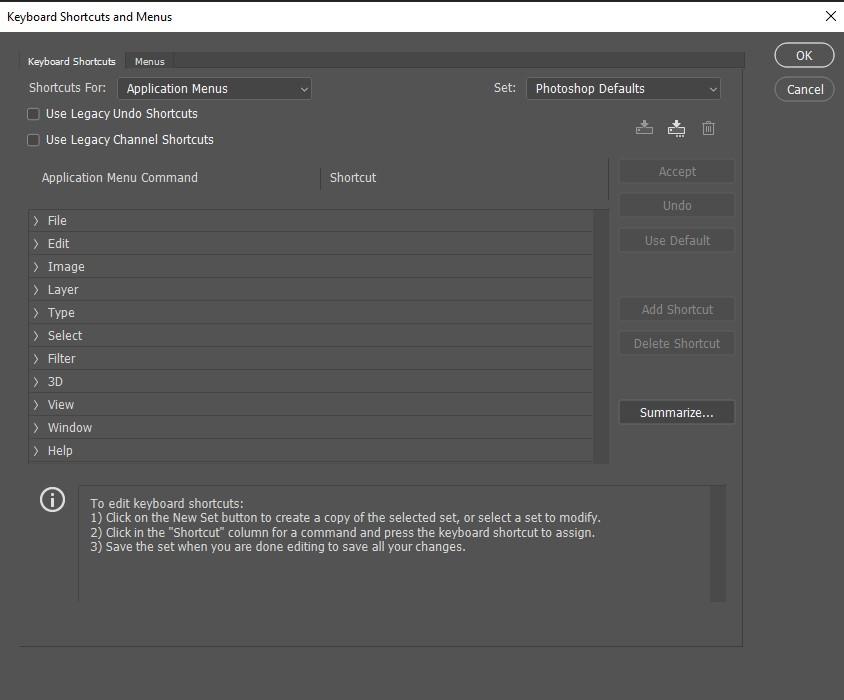In this article, we are going to look at how to create your own custom Photoshop keyboard shortcuts. What you are doing in Photoshop, just being able to customize your own keyboard shortcuts is an amazing and also easy way to speed up your workflow and make Photoshop much more efficient.
At first, Adobe introduced the ability to customize its own keyboard shortcuts in Photoshop CS. For this, you will need a Photoshop CS or higher version. Before Photoshop CS, we all know that we were stuck with whatever keyboard shortcuts the good folks at Adobe felt like giving us. But now time and system have changed. Now we can create our own Photoshop Keyboard Shortcuts according to our choice.
You can easily assign a keyboard shortcut in Photoshop, from menu bar options, commands to palettes and palette options, filters, adjustment layers, tools etc as you want. You can even change any shortcuts that Adobe has built into Photoshop. It’s fun to customize your own style and this feature gives you the ability to work faster in Photoshop.
Let’s see how to create shortcuts to two of the most commonly used filters in Photoshop, one is a gaussian blur and another is the unsharp mask. These two filters are used time and time again, if you don’t create keyboard shortcuts of them, we have to drag your mouse cursor up to the filter menu at the top of the screen and then make your way through sub-menus until you get to them every time when you want to use them. It is very time consuming and boring. So why not use easier and faster to simply press a couple of keys on the keyboard. Let’s get started.
Step 1: Select keyboard shortcuts
It’s easy to create, change or delete keyboard shortcuts in Photoshop all done from inside the Keyboard Shortcuts dialog box. Go to the edit menu and then Keyboard Shortcuts.
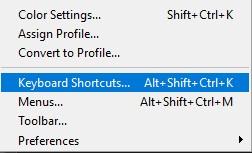
Go to Edit > Keyboard Shortcuts.
You will get the Keyboard Shortcuts dialog box.
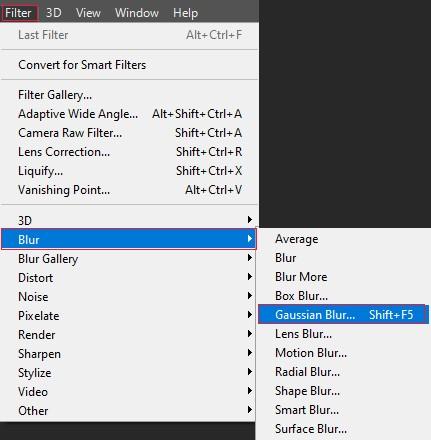
Step 2: Choose shortcut set to make changes
Before you go changing or adding keyboard shortcuts, first you have to select which currently existing set of shortcuts you want to make changes to. You can find this option at the top of the Keyboard Shortcuts dialog box. The Photoshop Defaults set is selected By default by default. It means you will be making changes to the list of shortcuts that are already included with Photoshop. In most cases, this is what actually we want.
Step 3: Choose type of shortcut
Here Photoshop gives you three different types of keyboard shortcuts that you can assign. You can create shortcuts for application menus. You can add, change or delete keyboard shortcuts and can choose between shortcut categories from the drop-down list directly below the Set option. By default, the application Menus category is already selected for you, and since you want to add keyboard shortcuts to a couple of filters, which you find under the Filter menu in the menu Bar, this is exactly the category you want:
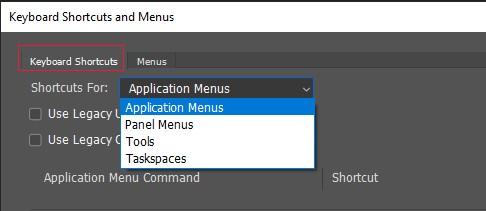
Step 4: Select the command, option or tool
After you have chosen your shortcut types, then scroll through the list of available commands, options or tools in the center part of the dialog box till you come to the one that you want. If you got it then click on it to select it. If you want to add a shortcut for the gaussian blur filter, first you need to select the list of filters by double-clicking on the word filter or click on the triangle. Now scroll down to the blur options. Here you will find the Gaussian Blur filter listed. Click and select it. This will highlight the option in blue and displays a small input box in the Shortcut column.
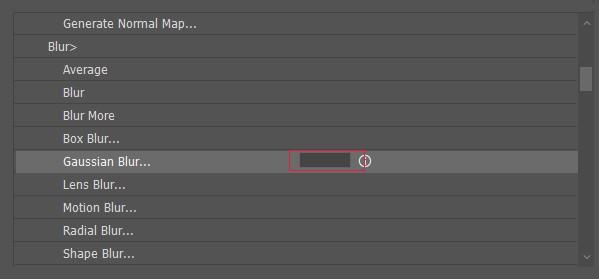
Step 5: Type in the keyboard shortcut to use
Select the Gaussian Blur filter in the list, then you can type in the keyboard shortcut you want to use to access it. There is a problem you will definitely run into when customizing your own shortcuts. The problem is Adobe has already used up lots of the key combinations that we want to use. In Photoshop there are huge programs and so many keys on your keyboard.
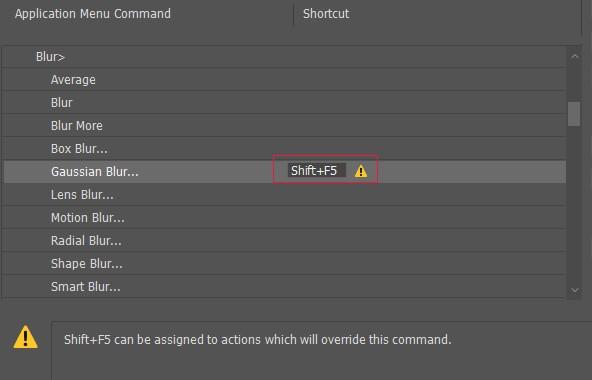
For example, suppose you want to use Shift+F5 to access the Gaussian Blur filter, so you will hold down your Shift key and press F5, which appears inside the small input box as Shift+F5. If you look below the scroll window though, you can see that Photoshop is warning you about something. Shift+F5 is already used as the shortcut for the Fill command. You can find it under the Edit menu. If you use the Fill command often enough and want to keep its shortcut, you can type in a different shortcut and see if it’s available. If you don’t use the Fill command on a regular basis and you don’t have any problem changing this shortcut over to something you use more frequently, you can accept the change. You can do the same thing for the Unsharp Mask filter.
Step 6: Save changes
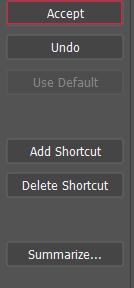
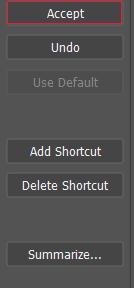
It’s time to save your changes as a new shortcut set. Just click on the save icon. Fix your shortcut name when the Save dialog box appears. Now click OK to exit out of the Keyboard Shortcuts dialog box.
